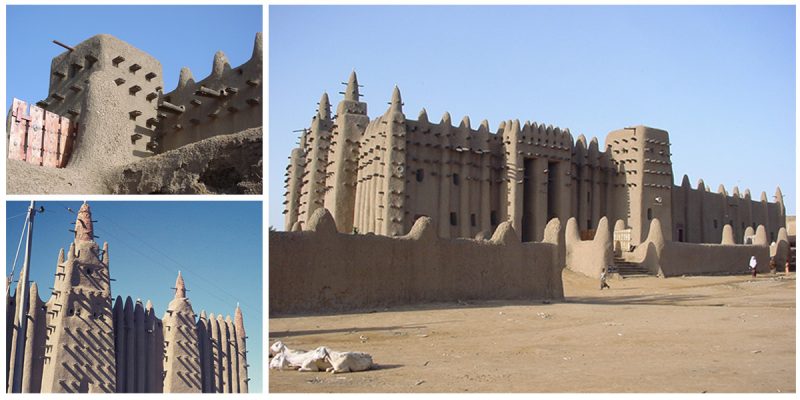One of the wonders of Africa and one of the most unique religious buildings in the world, the Great Mosque of Djenné is a large banco or adobe building that is considered by many architects to be one of the greatest achievements of the Sudano-Sahelian architectural style, albeit with obvious Islamic influences.
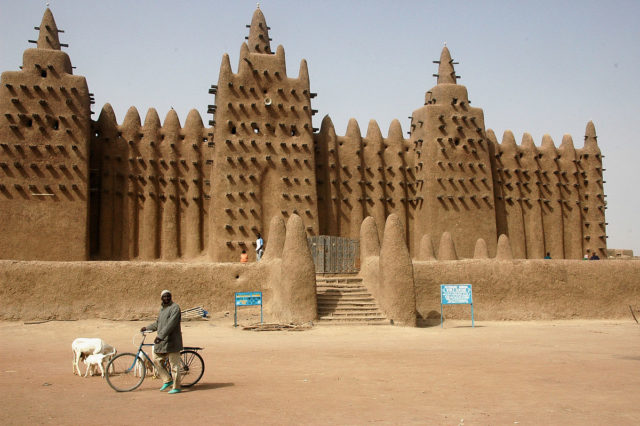
Djenné flourished as a great center of commerce, learning, and Islam. The first mosque at the site was built between 800 and 1250 C.E. Made completely out of mud brick, it is the largest construction of its type in the world.
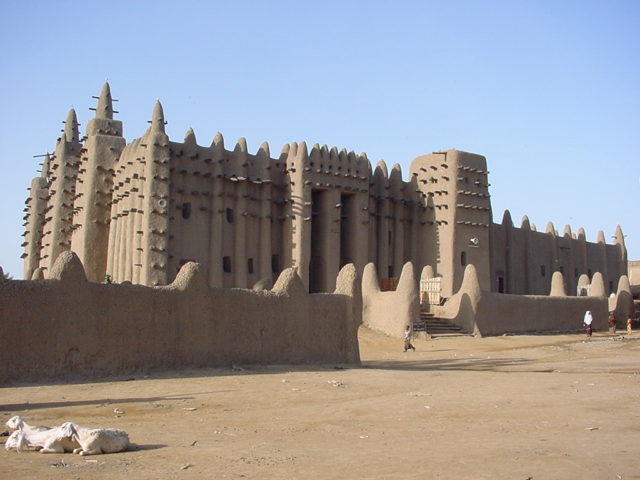
The first written documentation of the mosque came from 1828, when French explorer René Caillié came across it. From his accounts, we can deduce that by then, the structure was in disrepair, but still used by those praying inside. Over the centuries, the Great Mosque has become the epicenter of the religious and cultural life of Mali.
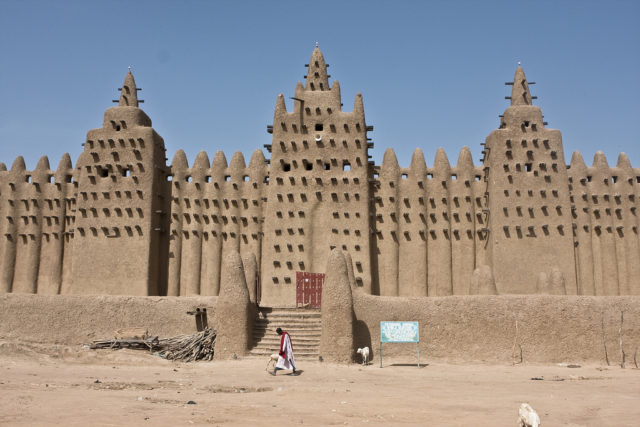
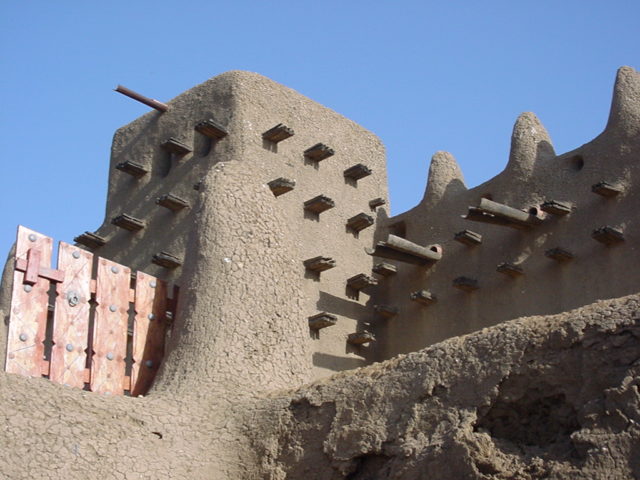
As described by Caillié, the second mosque was built between 1834 and 1836, replacing the original damaged building. It was much bigger than the original. It also featured a series of low minaret towers and equidistant pillar supports.
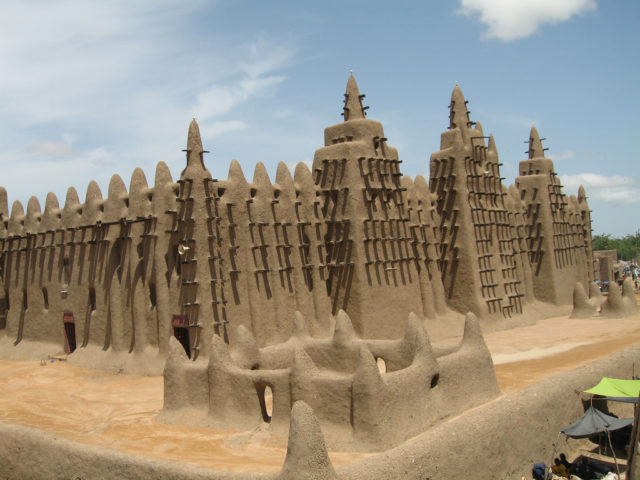
Soon thereafter, the Great Mosque became one of the most important buildings in town, primarily because it became a political symbol for local residents and for colonial powers like the French, who took control of Mali in 1892, led by Louis Archinard. The present, and third, iteration of the Great Mosque was completed in 1907, and some scholars argue that the French constructed it during their period of occupation of the city.
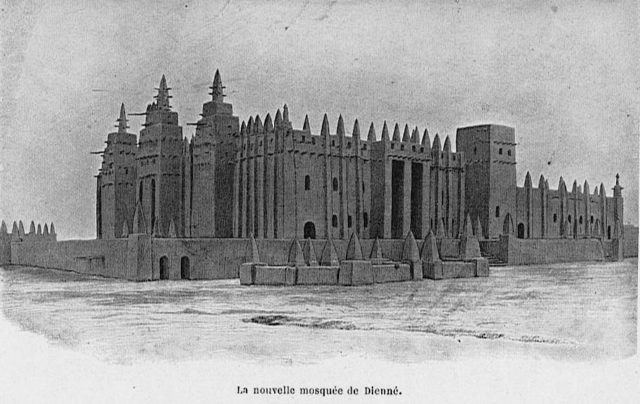
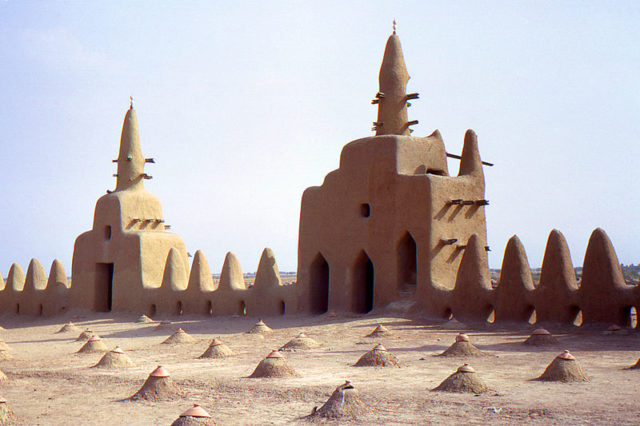
The walls of the Great Mosque are made of sun-baked mud bricks called ferey, and are coated with a mud plaster which gives the building its smooth, sculpted look. The walls also insulate the building from heat during the day, and by nightfall have absorbed enough heat to keep the mosque warm through the night.
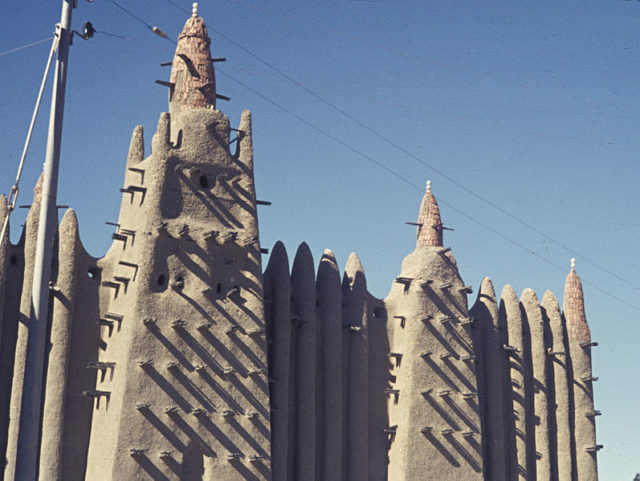
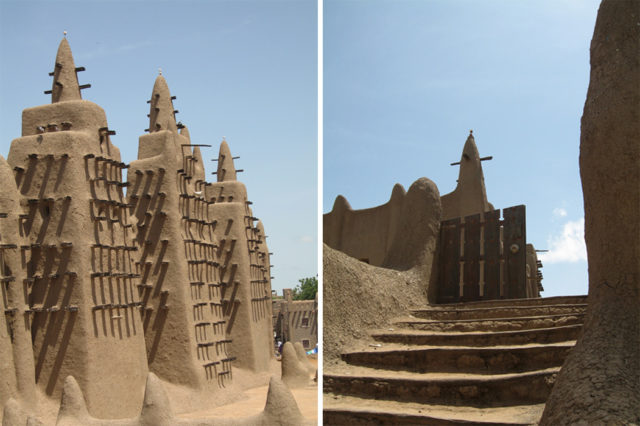
The main entrance faces the north and the prayer wall of course east, toward Mecca. Most prominent are the three large towers that look like minarets. Each minaret contains a spiral staircase leading to the roof, and on top of each minaret is a cone-shaped spire topped with an ostrich egg, symbolising fertility and purity.
